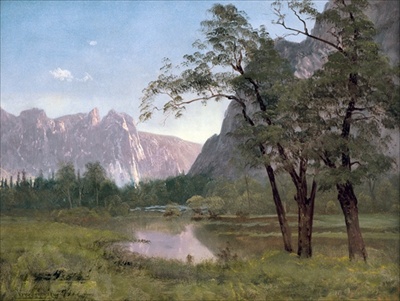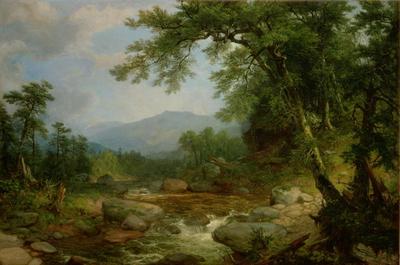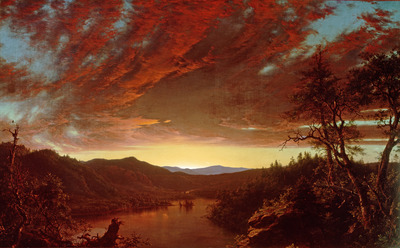Published 21/05/2016
Stretched out over 84 million acres, the country's National Parks are as uniquely American as the Declaration of Independence. Artists were instrumental in the effort to set in motion legislation to protect and preserve our beloved landscapes for future generations.
The creation of the first National Park in Yosemite Valley during the mid 19th century set in motion events that would lead to legislation protecting and preserving the land for future generations. Due to the influence of painters, amongst others, creating romantic portrayals of natural beauty, unspoiled areas particularly in the West became more prominent as wonderful landscapes available not only to a privileged few, but everyone.
Of the artists recognized for popularizing natural parks of Western America, Thomas Moran is one of the most acclaimed. His pencil and watercolor landscapes of Yellowstone National Park captured the grandeur and documented the extraordinary terrain and natural features of the Yellowstone region. His illustrations appeared in Harper’s Weekly, The Aldine and other publications. His work was later presented and inspired Congress to establish the National Park System in 1916, a feat achieved due to Moran’s ability to capture the scale and splendor of the beautiful Yellowstone region. After this triumph, Moran adopted the new signature of “TYM”, Thomas “Yellowstone” Moran.

|

|

|
Regarded as one of the founders of the Hudson River School, a 19th century art movement of landscape painters influenced by romanticism, Cole was known for his realistic and detailed portrayal of American landscape and wilderness, whilst at the same time exploring a way for Americans to assert the validity and power of their nation through paintings that championed this unique scenery. Cole was a dedicated conservationist; even painting the people in his work smaller so they appear to be dwarfed by the immensity of nature. Cole’s work influenced many artistic peers of the Hudson River School including Asher B. Durand and Frederic Edwin Church. |
|
Although considered part of the Hudson River School, Bierstadt was not held in particularly high esteem by his fellow artists and critics. This was due to his use of large canvases, thought to be egotistical and unfair to his contemporaries when exhibited together. He did however become internationally renowned for his beautiful and enormous paintings, and was known to change the landscapes of his work to inspire awe, adding color and light which was not always true. With his work finding its way into public and private collections at staggeringly high prices for his time, Bierstadt was one of the most famous and financially successful artists of Western American art. |

|

|
Known as the “father of American landscape painting”, Durand was a notable exponent of the Hudson River School style of painting. Despite not taking painting up with any real seriousness until the age of forty, Durand produced meticulous works that were much admired for their faithful depictions of natural forms, light and atmosphere. He increasingly believed that direct study of nature should be the primary source for American artists and also believed, like other Hudson River School artists, that nature was an ineffable manifestation of God. |
|
Despite travelling extensively throughout his lifetime, Church made copious sketches in search of material for his elegant paintings. Having finally settled in America where he was inspired by the fascinating variety and complexity of nature by that of J.M.W. Turner and English writer John Ruskin, Church would create paintings for which he would later become known. His landscapes conveyed a serene sense of light and space, showing nature in its purest state without human presence. Although he suffered from rheumatism of the right arm throughout most of his life, Church is still regarded as one of the finest examples of the Hudson River School style. |

|


